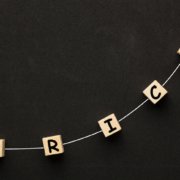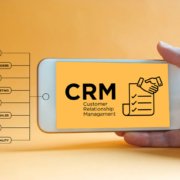Senior Living Marketing Strategy: Creating Your Value Proposition
When it comes to devising a killer senior living marketing strategy, we need a new shtick. I’m tired of listening to recorded calls and mystery shops and hearing the same things: We have the best people. You’re going to love the food. We’re resident-focused.
If every senior living community is saying the same thing, then what’s the point? How can you possibly differentiate? To stand out, you and your team need to agree on your community’s value proposition.
How do you go about creating one?
Well, when was the last time you spent time with your team to honestly discuss your senior living marketing strategy? Have you recently looked at your place in the market, your differentiators . . . and then figured out a story that conveys those things? Remember, people are more engaged with stories than information. Finding time to brainstorm can be a great team-building exercise. It will also help get everyone up to speed with what your community’s value proposition is. (And how to communicate it.)
Senior living marketing strategy: Start with a thorough competitive analysis.
This involves going on a tour of each competitor and acting as the prospect. Ask all the questions that prospects ask you to see how the community sales person answers them. How are they are positioning their community? Do they explain their pricing, levels of care, amenities, lifestyle, memory care program, etc.? Pick up a full marketing packet to see how your community’s presentation compares. Make notes of your impressions right away while the experience is fresh in your mind.
Senior living marketing strategy: Do a SWOT with the team.
Schedule an hour or two to strategize as a team about your community’s strengths, weaknesses, opportunities, and threats (SWOT). You can go online to get an outline, training, and tools on how to do a SWOT. But for now, here is a quick overview.
Strengths & weaknesses refer to internal aspects of the community
- Demographics, location – close to cultural, community & healthcare resources, on a main road, easy to find? What are the characteristics of your current residents and families? Why did they choose your community?
- Physical plant – first impressions, age & condition of interior & exterior, updates needed, does the model apartment Wow? Size of community, apartment mix, etc.
- Amenities – dining, activities, transportation, recreation, social, spiritual, intellectual activities, pool, spa, etc.
- Care – survey results, memory care program, levels of care available, niche programs, acuity management, training, technology
- Team – stability, experience, turnover, leadership, culture, mission, values, etc
- Other – reputation, ownership, customer service, friendliness, family engagement, history of community (who built it & why?)
- Price/value – drill down into competitive analysis
Opportunities & threats refer to external aspects of the community
- Marketplace Changes – new communities in development, competitors adding on units or products (i.e. memory care), hospital closing, businesses coming or going?
- Competitors – running specials, renovating, creating niche programs, have an ACO relationship with the local hospital that could reduce your referrals? Changes in leadership/ turnover/ stability? Acquisitions?
- People Changes – have key referral sources moved, are there new relationships that have to be nurtured, are there new docs in town, new homecare companies?
- Regulatory/Economic – Did the state create a grant program to encourage homecare? Is the hospital forming an ACO? Are there new state regulations that may affect you?
When the SWOT is completed, your team will be able to identify unique characteristics that will create your “better and different story.” In other words, your value proposition. So, when someone asks why they should select your community, you have your answer at the ready.
Here’s an example: “We’re locally owned, and we do business with our friends and neighbors. Our owner built this community because he wanted his mother to have a lovely place to live. And she lived here for six years until age 92! Our owner is here every week to speak with our team, the residents, and their families. And because we don’t own hundreds of communities, we can make sure that this community runs well. Our residents develop strong bonds with our staff. We have very low turnover! Our staff has worked here an average of 5 years. We got a perfect score on our most recent state survey and a 92% satisfaction score from residents and families.”
Now THAT’S a story, right? And certainly much more compelling than “We have the best people and great food.”
Need help with your senior living marketing strategy?
You’ve come to the right place. We have deep expertise in senior living and marketing. Set up a complimentary brainstorming session today.













Great conversation Debbie. I agree with the need for a meaningful SWOT analysis. In addition to understanding what is different and better about our product/service package, what One On One has found that most prospects (especially the higher functioning prospects who don’t “have” to move) need help getting “Ready”. Readiness is tied to the decision of “whether” they to move at all. Psychologically this question needs to be resolved before prospects are willing and able to consider “where” to move. Establishing an emotional connection, building trusting relationships and learning about their life story is critical. We call this Prospect-Centered Selling. In all of the different care levels and property types where we sell, we find that what really makes us “different and better” in the eyes of a prospect, is that we invest the time to listen, probe and guide.